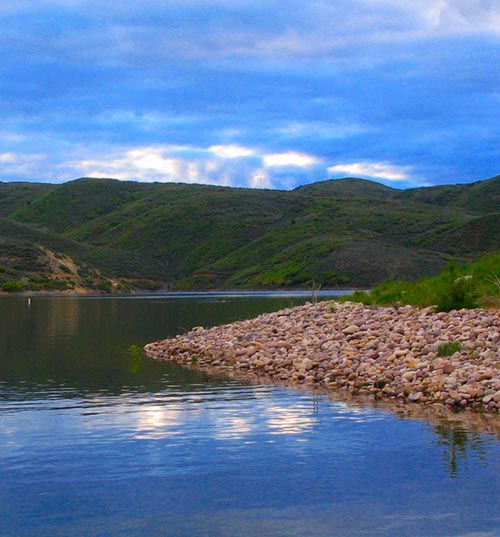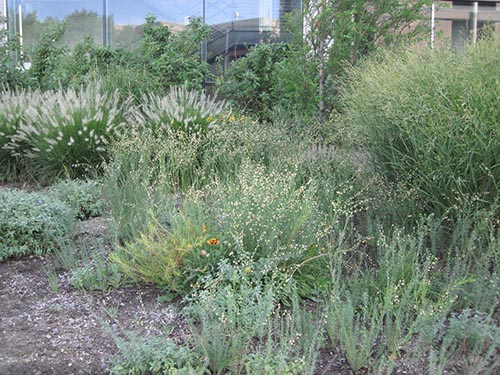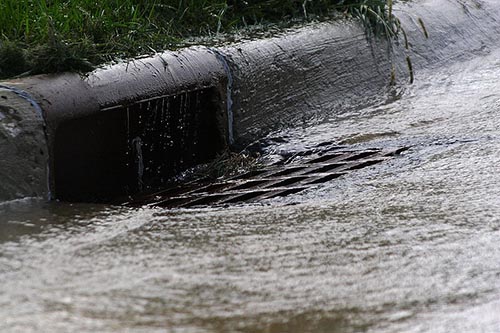Where's the Water - Discussion Questions
Background information:
Approximately 72 percent of the earth is covered with water. Sources of water are the oceans, icecaps and glaciers, groundwater, freshwater lakes, inland seas and salt lakes, the atmosphere, and rivers. In this activity, 10 liters (2.5 gallons) of water in a bucket are used to represent all the water on the earth. See the table below for the percentage of each water reservoir in relation to the total amount, and the appropriate measurement for each reservoir.
| Reservoir | Approximate % of the total amount | Measurement |
|---|---|---|
| Oceans | 97.25 | All water left in bucket |
| Icecaps/glaciers | 2.0 | ~ 200 ml (~3/4 cup) |
| Groundwater | 0.7 | ~70 ml (~1/4 cup) |
| Freshwater Lakes | 0.006 | ~ 3ml (~1/8 tsp) |
| Inland Seas/ Salt lakes | 0.004 | ~4 drops (~1/12 teaspoon) |
| Atmosphere | 0.001 | ~ 1 drop |
| Rivers | 0.0001 | ~ 1 flick |
The percentage of usable freshwater is reduced by pollution and availability (location). Therefore, the actual amount of water that is usable by humans is very small (approximately 0.00003 percent).
Discussion Questions:
1. How much of the water on the earth is actually available for human use?
 Logically, one would assume if you added the percentages of the freshwater sources,
you would find the total amount of usable water. The actual amount is reduced by
pollution and availability. For example, about 40% of U.S. freshwater is too polluted
to use; about half of earth's groundwater is not accessible; and frozen ice caps
and glaciers are generally not available for use. When all of this is taken into
account, only about 0.003% of the earth's water is available for human use. (This
can be demonstrated by a flick of water from your 10 l reservoir).
Logically, one would assume if you added the percentages of the freshwater sources,
you would find the total amount of usable water. The actual amount is reduced by
pollution and availability. For example, about 40% of U.S. freshwater is too polluted
to use; about half of earth's groundwater is not accessible; and frozen ice caps
and glaciers are generally not available for use. When all of this is taken into
account, only about 0.003% of the earth's water is available for human use. (This
can be demonstrated by a flick of water from your 10 l reservoir).
For more facts about polluted water in the U.S. and the world, see:
http://www.waterbenefitshealth.com/water-pollution-facts.html.
2. How can students conserve water?
There are many ways students can conserve water. Discuss the following tactics with
your students:
 When landscaping, choose plants that don't require more water than is provided by
nature
When landscaping, choose plants that don't require more water than is provided by
nature
- Don’t leave the water running while brushing your teeth.
- Limit your showers to 10 minutes or less.
- Look around your house for leaky faucets. Ask your parents to fix them immediately.
- Keep a pitcher of water in the refrigerator so you don’t have to run the faucet and wait for the water to cool.
- Clean your sidewalks with a broom, not a hose.
- Wash your car or dog on the lawn instead of the driveway. This way your lawn gets watered too.
- Only wash full loads of dishes and laundry.
3. How can students help reduce pollution to the already small amount of water that is available for human use?
 Don’t use excessive amounts of fertilizers or pesticides around your house. They can
wash into the storm drains and end up in a stream.
Don’t use excessive amounts of fertilizers or pesticides around your house. They can
wash into the storm drains and end up in a stream.
- Never put something down a storm drain that may hurt a fish.
- Don’t be a litter bug. Always dispose of trash in a proper container, not in the water.
- Make sure that your family car does not leak oil or antifreeze. This can wash into the water and be dangerous for fish, birds, even cats and dogs.
- Walk only on existing trails when near the water to help reduce erosion.
